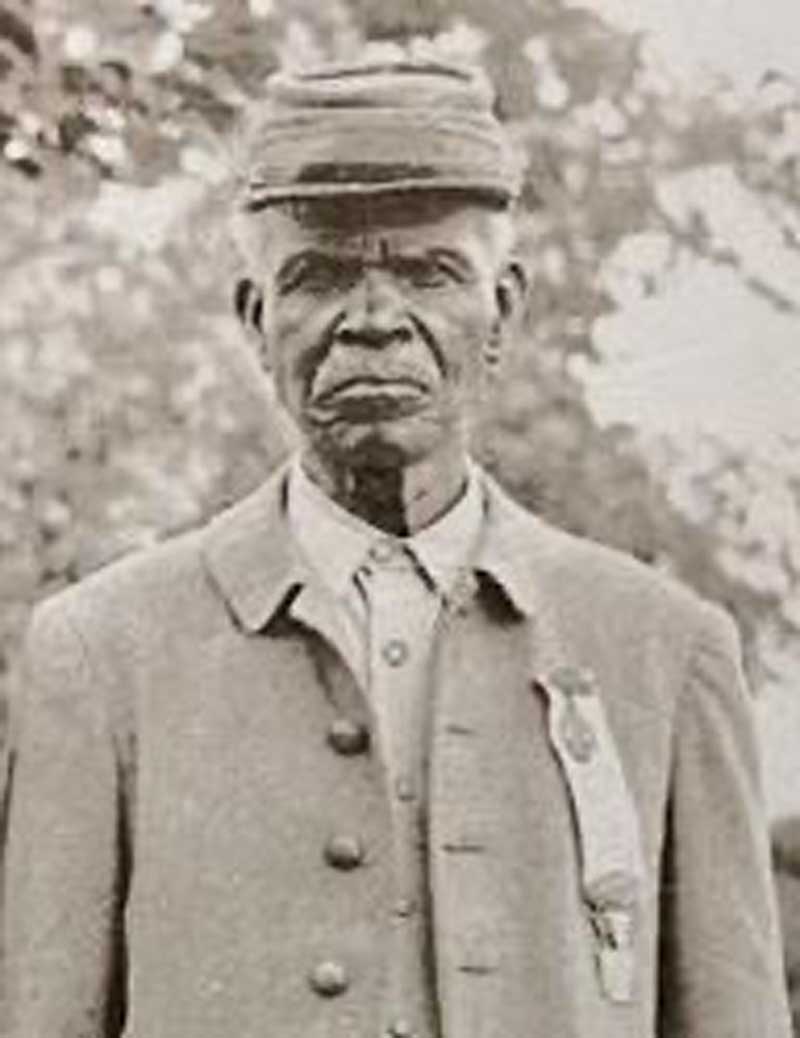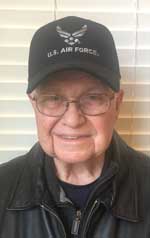A Neglected Chapter of American History - Part 1 of a Series

At Appomattox Courthouse in April of 1865, an Alabama soldier by the name of Zeb Thompson stood, rifle by his side, within a stone’s throw of General Robert E. Lee when he yielded his sword to General Grant. Thompson had participated in many of the greatest battles of the War during his service to the Confederacy and had been wounded three times. Thompson, like several other Confederate soldiers looking on, was a black man. Also there was Private Needham Leach, one of two blacks, and ten whites left in Company C of the 53rd North Carolina Regiment. These were just a few of at least 50,000 and as many as 100,000 black slaves and freemen who served the Confederate cause in some military or naval capacity. Thompson indicated in his 1917 interview with the Birmingham Age-Herald that he had attended every Confederate reunion and was very proud of his war record.
On May 15, 1861, Walter Bryson, a recent graduate of South Carolina Medical School in Charleston and son of a prominent Hendersonville, North Carolina, family, returned home to enlist in the Hendersonville Rifles. With him went 17-year-old George Mills, a slave belonging to his father, to serve as his body servant. Within a short time Bryson was elected by his fellow soldiers to serve as Captain of Company G of the 35th North Carolina Troops. Unfortunately, Captain Bryson, only 21-years-old, was killed by a Yankee sharpshooter at the Battle of Sharpsburg (Antietam) in Maryland on September 17, 1862.
George Mills recovered the body of his master’s son from the battlefield and by an arduous journey obtained an iron casket and a wagon and returned Walter Bryson’s remains to his grieving family in Hendersonville, thus faithfully fulfilling a promise to the Bryson family. Upon his return to Henderson County, George Mills served in the Home Guard until the end of the war. He eventually received a Confederate pension and was active in Confederate veteran affairs until his death in 1926. Both Walter Bryson and George Mills are now buried in Oakdale Cemetery in Hendersonville. The grave of George Mills is marked with a Confederate Cross of Honor and a memorial plaque placed by the United Daughters of the Confederacy in 1960. In April of 2006 the local Sons of Confederate Veterans in Hendersonville renamed their camp the Captain Walter M. Bryson-George Mills Camp, honoring both men.
In late June and early July of 1863, a force of 2,000 Confederate cavalry, consisting of Kentucky, Texas, and Alabama regiments under the command of the daring and flamboyant Major General John Hunt Morgan, crossed the Ohio River and swept through southern Indiana and Ohio in a completely unexpected and startling raid. This panicked the state and local governments of Indiana and Ohio and diverted 60,000 Federal infantry and cavalry from more pressing military objectives. Morgan’s raid was not officially authorized by his Confederate commanders, and he and his men were later captured, but their daring made a lasting impression. Indiana and Ohio civilians and local militia were also astonished to see dozens of black faces among these elite Confederate cavalrymen.
It was very late in the war, March 13, 1865, before the Confederate Congress reluctantly authorized President Davis to call on slave owners to provide the service of able-bodied servants for military service. Although some Confederate leaders, such as General Patrick Cleburne, had long advocated the move, many had resisted the idea. Many feared the loss of productive workers in the vital cotton and agricultural industries. Others were uncertain of the loyalties and fighting spirit of slaves essentially drafted into the army. By 1865 however, President Davis, General Lee, and a majority of the Confederate Congress believed the move was essential to win the war. They were also willing to give those slaves who served in the army their freedom at the end of the war as a reward for their service. (Most Southerners were quite willing to give up slavery to achieve their independence.)
However, many blacks both free and slave were already serving in the army by that time. Confederate government was by its very nature decentralized government with great flexibility left to the states. For example, the Tennessee Legislature authorized enlistment of “all male persons of color between the ages of fifteen and fifty” in June of 1861. In other states many free blacks joined local militia and Home Guard units. As the war continued, both free and bonded blacks began to fill in many needed occupations and positions in the Confederate Army. Many “body servants” accompanied their masters into the army. Early in the war, most of these body servants supported their masters and their units in the rear. As the war progressed it became more and more common for body servants to accompany their masters into battle armed to the teeth and fully participating in combat.
Blacks were especially common as teamsters of Confederate supply wagons. Great numbers were used for building fortifications and other engineering support or “sapper” (combat engineering) jobs. They were also enlisted as nurses, ambulance drivers and attendants, railroad firemen, cooks, buglers, drummers, fifers, and all sorts of musicians, barbers, messengers, blacksmiths, and other support positions. One Tennessee regiment even had a much appreciated black chaplain. These support troops were often exposed to enemy fire in accomplishing these activities.
Many blacks became integrated though one means or another into regular infantry and cavalry regiments and artillery batteries. Many accounts indicate they were frequently used as sharpshooters. Considerable anecdotal evidence seems to place more blacks in cavalry and artillery units than others, perhaps because of past responsibilities and skills learned such as shoeing and caring for horses, repairing and maneuvering heavy wagons, and other plantation and farm experience also very necessary to keeping armies in the field. A Union Army observer estimated that at least 3;000 of 64,000 Confederate troops that moved through Frederick, Maryland, on their way to the battle of Sharpsburg (Antietam) in 1862 were fully armed and equipped blacks, many on horseback.
One fact that may surely be surprising to those who have only been indoctrinated in the typical liberal narrative of the Civil War is that blacks played a prominent part in the success of Confederate General Nathan Bedford Forrest’s cavalry. Confederate commanders of brigades and larger units were allowed to have an escort company. These were particularly important in cavalry brigades because of the greater need for quick coordination in adjusting to changing battle and movement plans. Forrest’s escort company was formed in September 1862, and he quickly made it into a special elite battle group within in his elite cavalry. Seven of approximately of 100 of these most elite of all cavalry were blacks. Robert E. Lee, though he had never met Forrest, called him the best soldier in the war. Among Union generals, Forrest was the most feared Confederate commander in the war.
There were many blacks in Forrest’s cavalry, but he personally brought in 43 of his slaves and promised them their freedom, if the South won the war. He gave them their freedom anyway, when it was clear that winning the war was becoming unlikely. However, they decided to stay with him to the end. Only one deserted. “Those boys stuck with me. Better Confederates never lived,” he later recalled. More than 20 of them returned to northern Mississippi with him after the war and were employed on his plantation.
One of Forrest’s black combat cavalrymen was Private Louis Napoleon Nelson (ca.1846-1934) of Company M, 7th Tennessee Cavalry Regiment (CSA). He first served as a bodyguard, cook, and scout, but was appointed the regimental chaplain at the request of the men during the Battle of Shiloh in April 1862. But “Uncle” Louis also fought as a cavalryman with Forrest at Brice’s Crossroads and several other major battles. He attended at least one Confederate Veterans’ reunion.
For more information on Forrest and his Cavalry, read Samuel W. Mitcham’s 2016 book: Bust Hell Wide Open.
Union Lt. Colonel John G. Parkhurst reported after the battle of Murfreesboro in Tennessee,
“There were also quite a number of negroes attached to the Texas and Georgia regiments, who were armed and equipped, and took part in several engagements with my forces during the day.”
Blacks were also common in the Confederate Navy from the very beginning of the war. Photographic evidence indicates that black sailors served on the Confederate Navy’s most distinguished commerce raider, the C.S.S Alabama, commanded by Captain Raphael Semmes. The Alabama terrorized and frustrated Yankee merchant shipping around the world.
According to Scott K. Williams’ website on Black Confederates in the Civil War, approximately 65,000 blacks served in some capacity in the Confederate Army. This is 6.5 percent of the estimated 1.0 million that served. About 193,000 blacks served in the Union Army or Navy, including 93,000 from Southern States. This is approximately 8.7 percent of the more than 2.2 million that served. Black Union soldiers served almost exclusively in 175 United States Colored Troops regiments under mostly white officers. Confederate blacks were integrated minorities in a wide variety of state military units.









 Mike Scruggs is the author of two books: The Un-Civil War: Shattering the Historical Myths; and Lessons from the Vietnam War: Truths the Media Never Told You, and over 600 articles on military history, national security, intelligent design, genealogical genetics, immigration, current political affairs, Islam, and the Middle East.
Mike Scruggs is the author of two books: The Un-Civil War: Shattering the Historical Myths; and Lessons from the Vietnam War: Truths the Media Never Told You, and over 600 articles on military history, national security, intelligent design, genealogical genetics, immigration, current political affairs, Islam, and the Middle East. 


